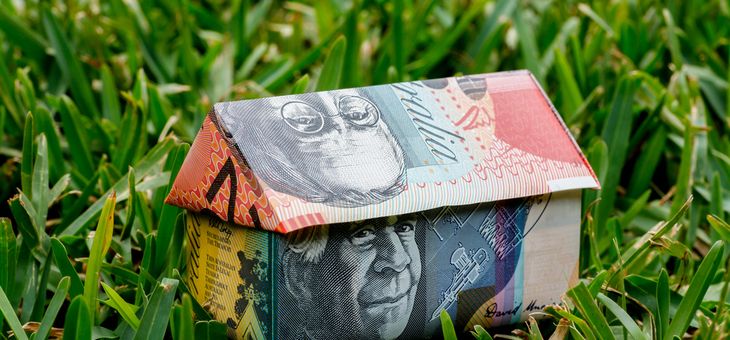18 February 2021
Australians' uptake of reverse mortgages defies global trend.
It’s no secret that most Australian retirees want to remain in their home as long as possible.
Many don’t have the funds to do so.
However, experts say more retirees could do so if they had a better understanding of reverse mortgages.
“Education and awareness are essential,” says Household Capital retirement specialist Shelley Wettenhall.
“Older Australians need to understand how different equity release products work and which are the most appropriate for their circumstances. They also need to understand how using their home equity can reduce uncertainty about longevity and increase confidence in long-term retirement housing, funding and wellbeing.”
A reverse mortgage allows people over the age of 60 to access some of the equity in their home to fund their retirement, without needing to sell their home.
Debate rages over whether this is the best way to fund a comfortable retirement, with some parties – including a former prime minister – critical of reverse mortgages and labelling them “superficially attractive”.
The Global Equity Release Roundtable 2020 survey report found reverse mortgages from banks had dropped from $2.5 billion to $2.3 billion in Australia in the past two years, defying the global trend upwards.
This is despite nearly 90 per cent of Australian retirees wanting to stay in their home.
Heartland Reverse Mortgages head of operations Sharon Yardley says demand for equity release options will continue to rise.
Interest rates on reverse mortgages are as high as 5 per cent, while most home loan interest rates are currently below 3 per cent.
National Seniors Australia (NSA) has asked Treasury to drastically lower the interest charged on the Pension Loans Scheme (PLS), saying the 4.5 per cent rate is a deterrent for asset-rich, cash-poor retirees who may otherwise tap into their home’s equity for retirement income purposes. The advocacy group is also campaigning for an even lower rate when the funds are used for home care.
In its Federal Budget submission, NSA said the scheme was a good idea, but “it has been poorly promoted and has an unattractive interest rate”.
“This rate is especially off-putting, given record low interest rates,” it says.
The PLS interest rate was cut from 5.25 to 4.5 per cent in December 2019.
In November 2020, the variable housing rate on an owner-occupier home was 3.17 per cent for outstanding loans and 2.85 per cent for new loans. Reverse mortgages from mainstream lenders were higher.
Treasury’s Retirement Income Review, led by Peter Costello’s former chief of staff Mike Callaghan, said home ownership supported people in retirement by acting as “a store of wealth that can be accessed”.
The Callaghan review noted better use of existing stores of wealth could provide an adequate retirement without the need to increase the mandatory superannuation guarantee, which is legislated to reach 12 per cent by 2025. The first rise from 9.5 per cent to 10 per cent is due in July, but whether it proceeds is still uncertain.
The use of more home equity has been criticised by former prime minister Paul Keating as requiring older people to “eat the house” to fund their retirement.
Former banker Satyajit Das, writing for the Australian Financial Review, says under current cheap money policies, many Australians will “work until they die”.
He says reverse mortgages are “superficially attractive” but pose difficulties.
“First, households must borrow when there is no capacity to service debt. The loan and capitalised interest must be recovered from the eventual sale proceeds of the home. This is dependent on asset values. If population cohorts retire and die around the same time, it will place pressure on house prices which secure mortgage loans.
“Second, reverse mortgages may not generate sufficient money to finance retirement. It assumes high levels of savings or home equity. This is compounded by the likely low loan-to-value ratio of a reverse mortgage because of the lack of cash interest payments and collateral value uncertainty.”
Household Capital chief Josh Funder disagrees.
“While the loan must be paid from the eventual sale proceeds of the home, strong and predictable Australian longevity and retirement housing patterns mean that discharge of any equity release products will be orderly and not disrupt property markets,” Dr Funder told YourLifeChoices.
“Furthermore, using home equity to be the ‘Bank of Mum and Dad’, already the fifth biggest bank in Australia, is not anticipated to place significant upward pressure on home prices.
“Like many other countries, Australia faces a major challenge in funding and housing and caring for an ageing population. We are blessed with the components of a strong system: great healthcare and longevity, a valuable and adequate housing stock, a efficient pension system and a leading superannuation system.
“For baby boomers, however, superannuation came in too low (3 per cent) and too late for it to adequately fund their retirement and complement the pension. However, around 80 per cent of Australian retirees are homeowners and the value of their home equity is three to four times the value of their superannuation.
“Providing access to home equity alongside superannuation and the Age Pension can increase retirement income streams and provide access to capital. Low LVRs, based on age and home value, ensure most home equity is retained and available to fund the later years and/or bequests. This is a sensible strategy to ensure retirees can access their home equity later in retirement to fund in-home or aged care needs.”
Mr Das believes the current strategy runs down the wealth stock of the country as savings are used up and houses sold.
“In effect, capital is consumed to finance current expenditures,” added Mr Das.
“Low wage growth and lack of income security combined with consumerism has meant inadequate savings. Absurd economic policies over decades have reduced investment income and cash flow. It has exaggerated housing prices, which are now apparently to be used to cover insufficient savings and inadequate investment cash-flow earnings.
“Retirement will revert to a privilege of the wealthy, supported by expensive, regressive tax subsidies which always favoured high-income earners. For the shrinking middle class, savings, and state pension, as long as it is around, may prove insufficient. Most will ultimately be unable to retire, having to work, and work, and work until they die.”
Regardless of expert opinions, the government is pushing for the family home to be part of the third pillar of retirement.
“We should celebrate Australian longevity and harness all three pillars of retirement funding – superannuation, the Age Pension and home equity to meet the challenge. Already Australia has world leading regulation of home equity access and an innovative private market for new home equity access products,” said Dr Funder.
“For retirees, the knowledge that they can access their home equity throughout retirement can provide greater confidence to meet their own needs and stimulate the local economy. Adding the family home to both retirement funding and housing as the third pillar of Australia’s retirement system is an important next step in meeting the challenge of an ageing population.”
Do you understand how a reverse mortgage could assist your retirement? Do you think you will be able to retire comfortably, or will you work much longer than anticipated?
Original article found at YourLifeChoices
Household Capital Pty Limited ACN 618 068 214 is the issuer of the information on this website. Household Capital Pty Limited ACN 618 068 214, Australian Credit Licence 545906, is the Servicer for the credit provider Household Capital Services Pty Limited ACN 625 860 764. HOUSEHOLD CAPITAL, HOUSEHOLD TRANSFER, LIVE WELL AT HOME and the Star Device are trademarks of Household Capital Pty Ltd







